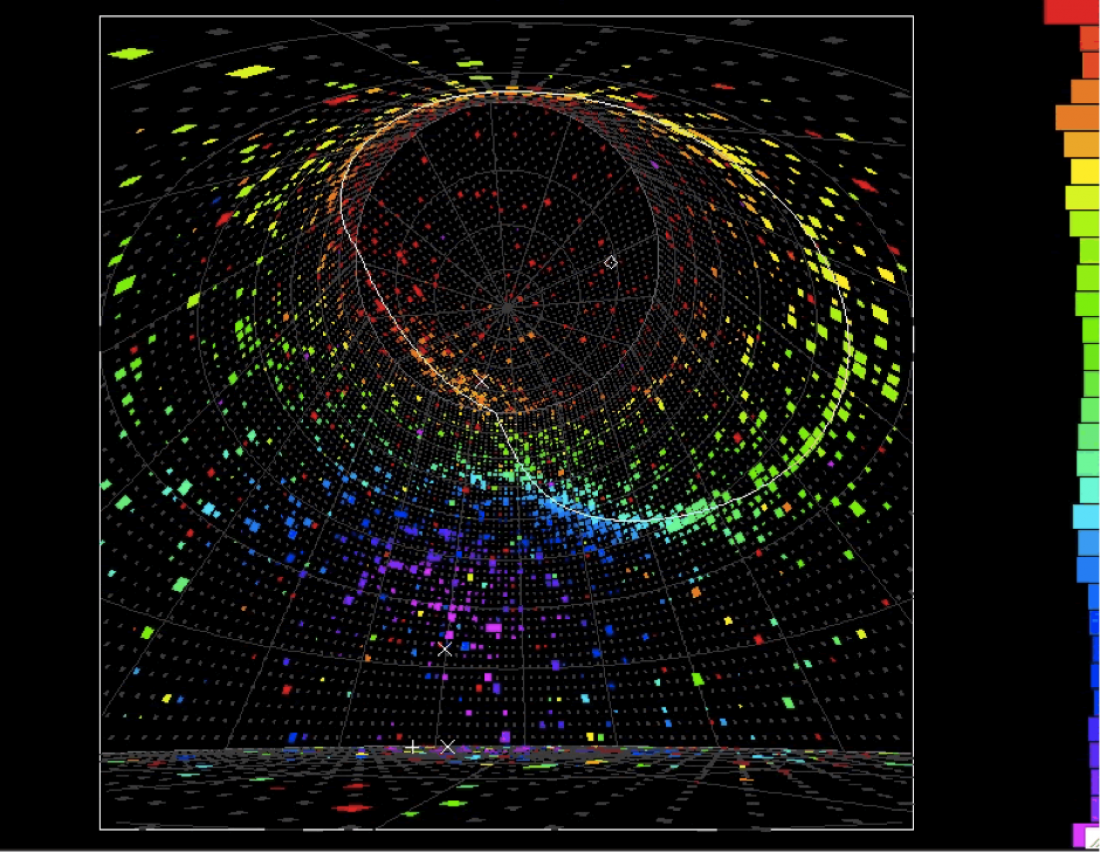Scientists from the T2K Collaboration in Japan have even stronger indication that tiny, almost massless particles called neutrinos and their counterparts, called antineutrinos, do not always mirror each other. Their work provides hints that could help explain an imbalance in the universe between matter and antimatter.
Neutrinos and their antimatter partners, antineutrinos, are born from natural sources such as fusion at the centers of stars and exploding stars, or man-made sources such as nuclear power plants and high energy collisions produced at particle accelerators. They are some of the smallest and most abundant particles in the universe. They have no electric charge, nearly zero mass, and rarely interact with anything else, making them extremely difficult to detect and study. Neutrinos, like other particles that cannot be broken down into smaller components, come in three ‘flavours’: electron, muon and tau.
The massive T2K Collaboration involves more than 500 researchers from 63 institutes in 12 countries. Together, they are studying neutrinos in hopes of understanding both the mysterious particles and a major unsolved issue in physics: the imbalance between matter and antimatter, which are the corresponding partner particles to matter but with opposite charges. For most physics processes, the laws governing matter and antimatter obey a symmetry that implies the universe should contain equal amounts of matter and antimatter. However, the universe is full of objects made of matter, such as the planets and stars, and hardly any antimatter. While it is clear that this asymmetry developed very early in the history of the universe, scientists are still unsure what caused the imbalance.
-----------------------------------
[Image (left)] When an electron antineutrino interacts in the Super-Kamiokande detector, it produces a positron. Since the positron is traveling faster than the speed of light in water, it produces light called Cherenkov radiation in a cone as it propagates. The detector is a cylinder with photo-sensors (light detectors) on the walls, floor and ceiling. The Cherenkov light is detected at the photo-sensors and produces a "ring" where it intersects with the wall. The figure shows the amount of light detected at each photosensor in the detector for this particular event.
------------------------------------
Physicists are trying to understand why this is by looking at chargeparity (CP) violation in neutrinos and antineutrinos. Particles and antiparticles are supposed to mirror each other, behaving the same way with the exception of having opposite charges or another opposite feature such as spin direction. Since the 1960s, experiments have found that partner particles do not always mirror each other, which is called CP violation. If scientists can determine how often CP violation occurs and understand what causes it, they might be able to explain matter-antimatter asymmetry.
To probe these questions, T2K scientists use an accelerator facility on the east coast of Japan to create a powerful beam of muon neutrinos and antineutrinos. That beam travels 295 kilometres (185 miles) underground to a detector in the west of Japan. The Super-Kamiokande detector is located in a mine 1,000 meters under a mountain to minimize interference from cosmic muons streaming through the atmosphere from outer space.
The T2K team has evidence that some of the neutrinos and antineutrinos changed their flavours, or ‘oscillated’ en route, from muon to electron. The data hint that neutrinos undergo this oscillation at a higher rate than antineutrinos, indicating possible CP violation. The findings support previous studies, but the scientists have more confidence in the results because they doubled the amount of neutrino data collected and improved the event reconstruction algorithm for data analysis.
While there is strong indication of neutrinos oscillating, the amount of antineutrino data is still too small to draw definitive conclusions about CP violation. However, with planned upgrades to the experiment facilities over the next ten years, the team hopes to make more observations that gets them closer to an answer.
“If the CP violation effect is large, we may expect to find evidence of CP violation at a confidence level greater than 99% during the lifetime of the T2K experiment,” says Mark Hartz, of the Kavli Institute for the Physics and Mathematics of the Universe, a member of the collaboration.
Further information
Project Assistant Professor Mark Hartz | E-mail: [email protected]
Kavli Institute for the Physics and Mathematics of the Universe
University of Tokyo
--------------------------------------------------
Asia Research News is our annual magazine to highlight exciting research studies from our partners. 25,000 copies are printed and distributed to key figures in research. Download a PDF copy from the link below or contact us if you would like print copies.



